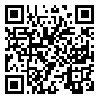Volume 7, Issue 2 (2015)
JHS 2015, 7(2): 115-147 |
Back to browse issues page
Download citation:
BibTeX | RIS | EndNote | Medlars | ProCite | Reference Manager | RefWorks
Send citation to:



BibTeX | RIS | EndNote | Medlars | ProCite | Reference Manager | RefWorks
Send citation to:
mohammadi N. Social and Economical Analysis of the Islamic Revolution of Iran According to the Recocnition Theory of Honneth. JHS 2015; 7 (2) :115-147
URL: http://jhs.modares.ac.ir/article-25-5650-en.html
URL: http://jhs.modares.ac.ir/article-25-5650-en.html
Assistant Professor, Department of Social Sciences, Shahid Bahonar University of Kerman, Iran
Abstract: (9331 Views)
In this paper, to test the theory of Honneth, historical methods and analysis technique were used. The analysis of socio-economic forces during the 40s and 50 in the Islamic Revolution of Iran showed that Shah failed in the modernization program involved: secularism, nationalism and capitalism. Along with feeling humiliated, mis-recognition, denial and injustice by some social forces, established a major change in the approach to policy seminary. Clergymen showed a tendency to transformed orientation, and different social classes were mobilized against the regime. They felt humiliatly because of the modernization project. Because of the regime’s emphasis on nationalism, political parties and different urban middle classes including academics, writers and intellectuals felt mis- recocgnition. All of these resons led to increasing the motivation of clergymen to join the revelution. But also the economic forces played a effective role to the victory of the Islamic Revolution in Iran. Traditional merchants, immigrants and poor people were the losers of the modernization project. Capitalism was unfaid and detrimental to them.They also joined the coalition. Based on these results, the recognition is one of the main causes of masses, mobalization against the regime.
Article Type: Original Manuscript |
Published: 2015/03/21
Published: 2015/03/21
| Rights and permissions | |
 |
This work is licensed under a Creative Commons Attribution-NonCommercial 4.0 International License. |







